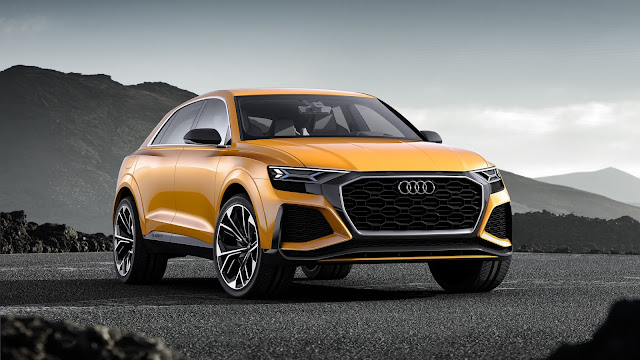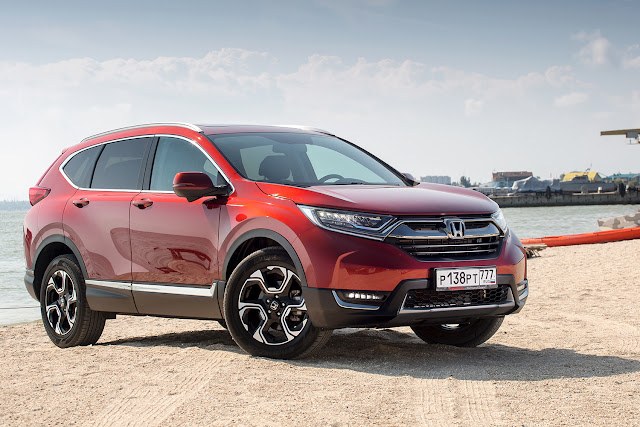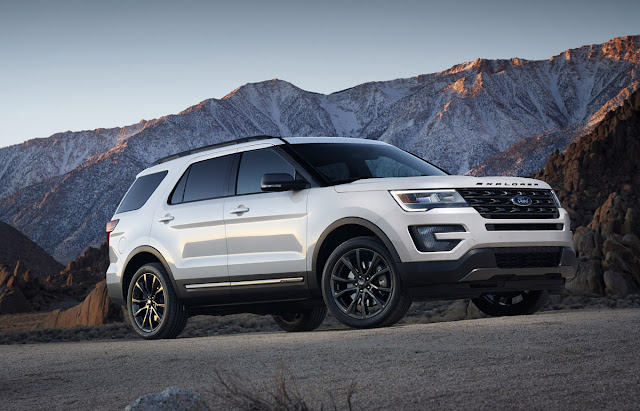Top Car Safety Technologies
January 15, 2018
Road accident is most unwanted thing to happen to a road user, though they happen quite often. The most unfortunate thing is that we don't learn from our mistakes on road. Main cause of accidents and crashes are due to human errors such as over speeding, drunken driving, distractions to driver, red light jumping, avoiding safety gears like seat belts, on-adherence to lane driving and overtaking in a wrong manner. Fortunately, in the many decades in which driving has become a given, a number of innovative technologies have been introduced to help make driving a safer experience every time.
It may not exactly be artificial intelligence, but some technologies are able to react to specific situations. Other technologies are like an extra set of eyes to help alert you to potential dangers, and help you to react in time to avoid harm to yourself, your vehicle or those around you as you drive. Here’s a roundup of some of the technologies available to bolster your driving experience.
Audi active lane assist
One of the latest assistance systems from Audi is Audi Active Lane Assist. At speeds above 60 km/h (37.28 mph), it uses a camera mounted in front of the rear view mirror to detect the lane markings. It observes the road to a distance of more than 50 meters (164.04 ft) and a coverage angle of roughly 40 degrees. It delivers 25 high-definition images per second.
 |
| 2017 Audi Q8 Sport Concept in Krypton Orange Colour |
Sophisticated software processes the images, detects the lane markings and the course the vehicle is following between them. If the vehicle approaches a line without the turn signal being activated, the system helps the driver to steer back into the lane by intervening gently, but perceptibly, in the electromechanical steering. The driver uses the MMI(Multi Media Interface) to determine how soon the intervention occurs and whether it should be combined with steering wheel vibration.
Audi lane assist is available for mid-size and full-size models with hydraulic power steering. Audi lane assist does not feature active intervention. The warning vibration is generated by a vibration motor in one of the spokes of the steering wheel; its intensity can be adjusted in three stages. The time at which it occurs is also selectable.
The color camera of the Audi active lane assist provides highly differentiated information. For example, it can differentiate between the yellow lines in construction zones and white lines. Its image data are also used by additional assistance systems, including the ACC (Adaptive Cruise Control) stop & go, the speed limit display, the safety system Audi pre sense front and the variable headlight range control.Mercedes-Benz Night View Assist PLUS
One of the most dangerous times to drive is after the sun goes down. Pedestrians and moving obstacles are most problematic when you have to rely on your headlights to pick them up. Fortunately, the engineers at Mercedes-Benz have devoted their energy and innovation into taking some of the danger out of night driving. Night View Assist Plus is a new Mercedes-Benz feature which uses infrared imaging to detect night hazards and give drivers an enhanced view of them before traditional headlights could pick them up.
Night View Assist uses infrared LED spotlights and two infrared cameras to detect obstacles beyond the range of traditional headlights. Paired with smart computer analysis, this system can identify people at up to 525 feet and large animals like deer at about 325 feet. Once an obstacle is detected, the digital speedometer display in the dash of the vehicle will switch to a bright, night-vision image of the road, with people and animals highlighted in color so they are easier to identify and avoid.
 |
| 2018 Mercedes-AMG GLS 63 4MATIC in Designo Hyacinth Red Metallic Colour |
Because infrared is not visible to the human eye, Night View Assist Plus spotlights won’t blind other drivers or pedestrians, but can greatly reduce the risk of hitting something on a dark road. In some situations, Night View Assist Plus will even automatically flash visible lights toward pedestrians who may be in danger to warn both them and the driver of the possible danger.
When active the system will activate above 35 mph when it detects a threat. You can also turn the system on permanently and have access to the night vision view at speeds over 6 mph.
Volvo City Safety
City Safety is one of the most advanced standard crash prevention offers you can find in a modern car. City Safety is a driver support system to help warn the driver to pedestrians, cyclists, and other vehicles that may emerge in front of your vehicle without much warning. Volvo can alert you with a visual, sound, or automatically breaking if the driver is not able to respond quickly enough. The City Safety function can help the driver avoid a collision when e.g., there is a sudden change in the traffic ahead if the driver's does not take action. The function assists the driver by applying the brakes automatically if there is an imminent risk of a collision and the driver does not react in time.
City Safety triggers brief, forceful braking in an attempt to stop your vehicle immediately behind the vehicle or object ahead. This braking may be perceived as being very sudden. City Safety activates in situations where the driver has not applied the brakes in time, which means that the system cannot help the driver in all situations. City Safety is designed to intervene as late as possible to help avoid unnecessary activation.
 |
| 2018 Volvo XC40 in Two-tone White with Black roof |
City Safety can help avoid a collision with a vehicle or cyclist ahead by reducing your vehicle's speed by up to 30 mph (50 km/h). In the case of pedestrians, City Safety can reduce speed by up to 28 mph (45 km/h). If the difference in speed between your vehicle and the vehicle ahead/pedestrian is greater than 30 mph (50 km/h) or 28 mph (45 km/h) respectively, City Safety's auto-brake function cannot prevent a collision but it can help mitigate effects of the collision.
Honda’s Collision Mitigation Braking System
Honda’s Collision Mitigation Brake System (CMBS) is a radar‐based autonomous emergency braking system. At speeds above 15km/h, moving and stationary vehicles are detected along a path some 100m ahead of the vehicle. When the system senses that the car is likely to hit one of these obstacles, a three stage process is initiated. In the first, typically around 3 seconds before impact, the driver is alerted by visual and audible warnings. In the second stage, when the system senses that a collision is still likely (typically some 2 seconds before impact), three sharp tugs are given on the seat belt and the car automatically starts to apply some braking. Finally, when a collision is unavoidable, CMBS tightens the front seat occupants’ seatbelts (using reversible tensioners different from the pyrotechnic devices used during the collision itself) and applies a high level of braking force. This braking can be supplemented by the driver up to the maximum that the car is capable of. All of the actions taken by CMBS are reversible: if an accident is averted (for example, if the vehicle moves out of the way at the last moment), the tension is removed from the seatbelts and the visual and audible warnings stop.
CMBS is a system designed to help prevent rear‐end collisions with vehicles which are stationary or travelling in the same direction. Several studies have shown that driver distraction or inattentiveness is a factor in the great majority of rear end accidents. The system is aimed at alerting the driver to an imminent rear end collision both at low speeds, typical of urban driving, and at higher speeds typical of rural roads and highways. In such accidents, the most common sorts of injuries are to the cervical spine, the soft tissue of the thorax and to the knees. |
| 2018 Honda CR-V in Basque Red Pearl Colour |
CMBS is not switched on by default at the start of each journey. CMBS can be switched on and off by the driver by means of a dashboard mounted button. CMBS will remain active as long as the button is in the ‘on’ position. CMBS relies on radar detection of the obstacles in front and is constrained by anything which limits its ability to detect, such as dirt, mud or snow covering the radar sensor. In such circumstances, the on‐board monitoring system would notify the driver of impaired radar detectability. CMBS was one of the first autonomous emergency braking systems to be developed and uses a single radar sensor which, in normal circumstances, will detect all vehicles from a small motorcycle upwards. Bicycles are usually not detected. Conversely, the system may sometimes detect metallic objects which pose no threat. More recently, multiple sensor systems are being applied by industry to overcome such issues. However, Honda has carefully balanced the sensitivity of CMBS to maximize its effectiveness when needed and to minimize irritation to the driver when it is not needed.
Ford Blind Spot Information System with Cross-Traffic Alert
Blind Spot Information System (BLIS), a system of protection developed by Volvo. Volvo's previous parent, Ford Motor Company, has since adapted the system to its Ford, Lincoln, and Mercury brands. Ford’s Blind Spot Information System with cross-traffic alert is a driver assist feature that helps detect vehicles in blind spots during normal driving and traffic approaching from the sides when reversing out of parking spots.
The feature uses two multiple-beam radar modules, the same used with cross-traffic alert, which are packaged in the rear quarter panels – one per side. The radar identifies when a vehicle enters the defined blind spot zone and illuminates an indicator light on the corresponding side view mirror, providing a warning that a vehicle is approaching.
 |
| 2017 Ford Explorer XLT Sport in Oxford White Colour |
Working in conjunction with Blind Spot Information System (BLIS), cross-traffic alert warns the driver of impending traffic while backing out of a parking spot Cross-traffic alert utilizes the blind spot system’s two multiple-beam radar modules. It can pick up a vehicle moving at least 5 mph within a 45-foot range – or five parking spaces – from either the left or right side of the vehicle. When cross traffic is approaching, three warnings are given: an indicator lights up in the corresponding outside mirror, an audible alert is sounded and a message center warning is displayed. The radar also works when backing out of angled parking spaces because its view is wider than just strictly sensing traffic coming at a 90-degree angle.
These technologies are changing how we drive and helping to make driving safer. But no matter how amazing these advances are, it is important to remember who is really in the driver’s seat. Drive at safe speeds, watch your blind spots and stay attentive, even if your vehicle has technology designed to help you with these important tasks.





0 comments